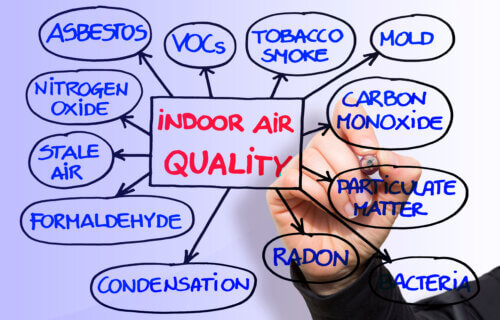CAMBRIDGE, England — Researchers have developed a tiny sensor made of a strange, smoky material that can sniff out dangerous gases in your home. Using artificial intelligence, this sensor can detect tiny amounts of formaldehyde, an odorless gas that lurks in many common household and office products.
This new sensor is made out of aerogel, a lightweight solid that contains over 99% air, earning it nicknames like “frozen smoke.” By carefully controlling the shape and size of the microscopic pores in the aerogel, the researchers optimized it to grab onto formaldehyde molecules. The aerogel also contains graphene and semiconductors to translate the chemical signal into an electronic one.
“VOCs such as formaldehyde can lead to serious health problems with prolonged exposure even at low concentrations, but current sensors don’t have the sensitivity or selectivity to distinguish between VOCs that have different impacts on health,” explains lead researcher Dr. Tawfique Hasan of the Cambridge Graphene Centre, in a university release. Their goal was to create an affordable sensor that uses very little power but still detects tiny amounts of specific gases like formaldehyde.
Formaldehyde is emitted by many common items like wood products, wallpapers, paints, and fabrics. Exposure can cause watery eyes, breathing difficulty, asthma attacks, and even cancer after prolonged contact. Although household levels are usually low, they can accumulate, especially in places like garages with paint cans and other formaldehyde-releasing products.

The new aerogel sensor can detect concentrations as low as 8 parts per billion, less than half the formaldehyde level deemed safe. And it works at room temperature, using 10-100 times less power than other sensors. This means it could one day be made into portable, wearable devices.
By incorporating machine learning algorithms, the sensor can also distinguish formaldehyde from other similar gases. “Existing VOC detectors are blunt instruments – you only get one number for the overall concentration in the air. By building a sensor that is able to detect specific VOCs at very low concentrations in real-time, it can give home and business owners a more accurate picture of air quality and any potential health risks,” says Hasan.
The researchers believe this aerogel technique could be used to develop sensors for other hazardous gases as well. Engineers at Warwick University are already building a multi-sensor device that will incorporate these materials to monitor several VOCs at once.
So one day soon, tiny frozen smoke sensors could be watching over indoor air quality, sniffing out danger, and leading to healthier homes and workplaces.
The study is published in the journal Science Advances.
